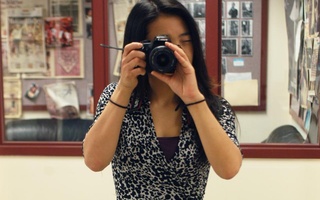Imagine your favorite picture: a cherished memory, a cool shot from the internet, or even just a photo with best friends. Each person’s response to a photograph is a personal reflection on a memory that happens to be captured in an image. In the past, these pictures stayed in one frame, one house, destined to be passed down and cherished, or thrown away and forgotten. With the advent of camera phones and the internet, not only can images be preserved on the go, but they also can instantly be uploaded to social media, transforming a personal experience into a group activity. Over the past few years, these mobile photography labs have proven to be invaluable assets to society. However, the recent increase in social sharing of shots has diluted the impact of this photography. Rather than serving as a means of commemoration and celebration, photography has become a mundane means of communication.
As the number of phones in the world creeps toward the world population, easy access to camera phones allows for quick transfer of information. In New York City, police officers encourage citizens to photograph or film crimes from their phones to aid in the pursuit of justice. Recently, revolutionaries have used camera phones to photograph and tape their actions, acting as photojournalists in countries such as Syria. Many historical events have been captured on camera phones and spread on YouTube, including Saddam Hussein’s execution. Even as recently as this week, ordinary citizens snapped images of the Boston Marathon tragedy and spread them online as the situation developed. Although these images vary in source, they share the common purpose of distributing information beneficial to society.
Initially, cameras phones were neither revolutionary nor historical; many people simply used them as a method to construct a set of personal memories. See a cool picture, snap a shot, and keep it in the memory banks as a keepsake. Taken alone, these cellular photos minimize the need to carry a clunky camera around just for that one fleeting photograph: Now memory preservation is at your fingertips. With the advent of photo sharing, what were once personal celebrations have transformed into a collective view of reality. A portion of Instagram’s popularity may be due to the nifty effects and the ability to mimic an expensive dollar camera with a free application. However, this transformation from mediocre to monumental is only part of the equation: The ability to instantly update the world about your new Volkswagen Jetta is a casual and convenient way of staying connected.
Although the notion of staying connected through images is a novel idea, these social networks have spread uncontrollably, as image sharing increasingly displaces textual exchanges and actual conversations. While many people use Instagram as a cheap photographic substitute, some use it to document their every move in a never-ending onslaught of monotonous memories. The introduction of Snapchat initially provided a medium for funny photographic exchanges between friends; now it seems that some people hold whole conversations via picture, relying on images rather than putting the effort into constructing their own words. The increased focus on images in a social context rather than personal affections should lead to concern for both photographic enthusiasts who value their art and the average citizen who values conversation.
The spread of imagery through social media, while slightly disturbing in its current state, could further marginalize interactions and flood our news feeds in the future. Whereas social media currently encourages people to share their personal photos with the world, this act is not only left up to the discretion of the user, but also depends on an ability to photograph in the moment. Memento, a Swedish start-up, intends to minimize the effort required to pick and choose memorable moments by developing a wearable camera that automatically takes pictures every thirty seconds. If successful, not only will this technology result in even more inconsequential and meaningless social uploads of personal memories, but more importantly, it will also continue to degrade the art of photography. As quick, instantaneous pictures become a larger part of social interactions, planned pieces of art decrease in value, and the average person becomes conditioned to a poor, constant stream of pictures rather than a few fantastic memories. If the need for instant connection continues to spread via social photography, unforeseen consequences will impact the photographic profession.
Whether at a concert, a zoo, or just a walk through the park, camera flashes sparkle through society at an ever-increasing rate. As the proportion of pictures increases exponentially, the significance of these memories decreases. Now for every historical and revolutionary moment, the world welcomes thirty out-of-focus and drunken quasi-memories into the photographic community. Just as poor quality photos increasingly dominate the world of social media, cameras permeate everyday interactions to keep pace with the demand for constant, rather than consistent connections.
Every time a camera flashes, a new picture is born, ready to be treasured and valued. But our eyes increasingly marvel at the flash rather than appreciate the darkness between memories.
Sam Reynolds ’16, a Crimson editorial writer, lives in Grays Hall.
Read more in Opinion
When Tragedy StrikesRecommended Articles
-
 Don’t Eat Yet!
Don’t Eat Yet! -
A Picture's Worth a Thousand CitiesIt’s painfully funny how the visitor’s approach to the museum and the tourist’s plan for a city mirror one another.
-
 Thoughts from Café Pamplona
Thoughts from Café Pamplona -
‘Undefeated’ First Amongst Football Documentaries“Undefeated” proves to be more than just another football documentary
-
Akwaaba to the Real WorldToo often, while exploring and volunteering in new places, I’ve treated every moment like a snapshot waiting to happen.
-
 27 Shots
27 Shots













